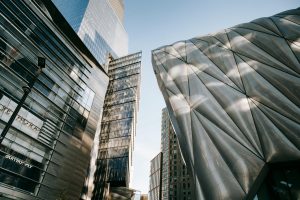The Evolution of Urban Planning: From Suburbs to Mixed-Use Developments
Urban planning has undergone a significant evolution in the past few decades, moving away from the traditional suburban model towards a more diverse and dynamic approach known as mixed-use development. This shift has been driven by the changing needs and preferences of modern society, as well as a growing recognition of the negative impacts of suburban sprawl. In this article, we will explore the evolution of urban planning, from the rise of suburbs to the emergence of mixed-use developments, and the benefits and challenges associated with this shift.
The Rise of Suburban Development
After World War II, there was a significant increase in suburban development as people sought to escape the crowded and polluted cities in favor of more spacious and affordable housing options. This resulted in the rise of single-use, low-density communities, located on the outskirts of cities. Suburban developments were designed to cater primarily to the needs of the automobile, with extensive road networks and ample parking spaces. This further encouraged individuals to rely on personal vehicles, leading to increased traffic congestion and air pollution.
One of the main attractions of suburban living was the promise of the “American Dream,” where homeownership and a suburban lifestyle were seen as the epitome of success. However, as the suburbs continued to expand, they became increasingly disconnected from urban centers, leading to longer commutes and a lack of access to essential services and amenities.
The Need for Change
As the negative impacts of suburban sprawl became more apparent, urban planners began to rethink traditional development models. The need for change was also fueled by changing demographics, as the baby boomer generation started to downsize and young professionals sought more accessible and diverse living options.
Another factor driving the demand for change was the growing recognition of the environmental consequences of suburban development, such as air and water pollution, loss of natural habitats, and a significant increase in carbon emissions. Additionally, the economic downturn of the early 2000s highlighted the financial risks associated with urban sprawl, as the cost of maintaining extensive infrastructure and providing services to low-density communities became unsustainable.
The Emergence of Mixed-Use Developments
As a response to these challenges, a new approach to urban planning emerged – mixed-use developments (MUDs). Mixed-use developments are walkable, transit-oriented communities, which combine residential, commercial, and recreational spaces in one compact area. They offer a diverse range of housing options, from apartments to townhouses, to cater to different demographics and income levels.
Benefits of Mixed-Use Developments
Mixed-use developments offer a range of benefits, both social and environmental. By integrating residential and commercial spaces, they create a sense of community, promoting social interaction, and reducing social isolation, which is often seen in traditional suburbs. The walkability of MUDs also promotes a healthier lifestyle, reducing reliance on cars and encouraging people to walk, cycle, and use public transportation.
From an environmental perspective, mixed-use developments are designed to be more sustainable, with compact, energy-efficient buildings, and green spaces that help mitigate the heat island effect. This reduces the carbon footprint of residents and improves the overall health and wellbeing of the community.
Challenges and Limitations
While mixed-use developments offer promising solutions to many of the problems associated with traditional suburban models, there are also challenges and limitations that must be considered. One of the main challenges is achieving a balance between residential and commercial spaces, as too much of one type of development can lead to an imbalance and negatively impact the community’s livability.
There are also concerns about affordability, as the high demand for mixed-use developments can drive up property prices, making it difficult for lower-income individuals to access these communities. This can lead to gentrification, pricing out long-time residents and displacing them to more affordable areas.
The Future of Urban Planning
The evolution of urban planning from suburbs to mixed-use developments has shown the importance of adapting and changing with the times. As society continues to evolve, urban planners will need to consider new challenges and opportunities, such as climate change, aging populations, and increasing diversity. The success of mixed-use developments has demonstrated that a diverse and environmentally sustainable model is the way forward, promoting connectivity, inclusivity, and livability.
In conclusion, the evolution of urban planning towards mixed-use developments is a positive step towards creating more sustainable, healthy, and vibrant communities. By addressing the flaws of traditional suburbs and promoting a more balanced and diverse approach, mixed-use developments offer a promising future for urban planning.










